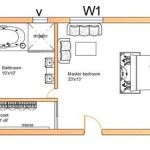What Does a Site-Specific Safety Plan Include?
A site-specific safety plan (SSSP) is a crucial document outlining the potential hazards present at a particular worksite and the control measures implemented to mitigate those risks. It serves as a blueprint for safe operations, ensuring the well-being of all workers and visitors on-site. A comprehensive SSSP is tailored to the unique characteristics of each project and reflects a proactive approach to safety management. It should be a living document, regularly reviewed and updated as conditions change.
Hazard Identification and Assessment
The cornerstone of any SSSP is a thorough hazard identification and assessment. This involves systematically identifying all potential hazards associated with the specific work activities, the environment, and the equipment used on-site. Hazards may include physical hazards like working at height, chemical hazards such as exposure to hazardous substances, biological hazards like mold or bacteria, ergonomic hazards related to repetitive tasks or awkward postures, and psychosocial hazards, including stress and fatigue. The assessment then evaluates the likelihood and potential severity of harm arising from these hazards.
Control Measures
Once hazards are identified and assessed, the SSSP outlines specific control measures to eliminate or minimize the risks. The hierarchy of controls provides a framework for selecting the most effective methods. Elimination, the most effective approach, involves removing the hazard entirely. Substitution replaces a hazardous material or process with a safer alternative. Engineering controls involve physical changes to the work environment, like installing guardrails or ventilation systems. Administrative controls implement safe work practices and procedures, such as training programs and work permits. Finally, personal protective equipment (PPE) is used as a last line of defense when other controls are not feasible or fully effective.
Emergency Procedures
A robust SSSP includes detailed emergency procedures to address various potential scenarios, including fires, chemical spills, medical emergencies, and natural disasters. These procedures should outline evacuation routes, assembly points, emergency contact information, and responsibilities of designated personnel. Regular drills and training exercises are essential to ensure that all workers are familiar with the procedures and can respond effectively in an emergency.
Communication and Training
Effective communication is vital for ensuring that all workers understand the safety plan and their roles and responsibilities. The SSSP should be readily accessible to all personnel, and regular safety meetings and toolbox talks should be conducted to discuss potential hazards and reinforce safe work practices. Comprehensive training programs tailored to the specific tasks and hazards present on-site are essential. Training should cover hazard recognition, control measures, emergency procedures, and the proper use of PPE.
Site-Specific Information
A key element of an SSSP is the inclusion of detailed site-specific information. This includes the project location, site layout, contact information for key personnel, emergency services, and relevant regulatory agencies. It should also include information about the specific work activities being performed, the equipment used, and the materials handled on-site. This information provides context for the hazard assessment and helps to tailor the control measures to the specific circumstances of the project.
Monitoring and Review
An SSSP is not a static document; it requires regular monitoring and review to ensure its effectiveness. Regular inspections and audits should be conducted to identify any new hazards, assess the implementation of control measures, and monitor compliance with safety procedures. The SSSP should be reviewed and updated whenever there are changes to the work activities, equipment, materials, or site conditions. Incident investigations and near-miss reporting provide valuable feedback for identifying areas for improvement and revising the safety plan accordingly.
Recordkeeping
Maintaining accurate records is crucial for demonstrating compliance with safety regulations and tracking the effectiveness of the SSSP. Records should be kept of hazard assessments, training sessions, inspections, incident investigations, and any changes made to the safety plan. These records provide valuable documentation for regulatory reporting and can be used to identify trends and improve safety performance over time.

How To Create A Construction Site Specific Safety Plan Infographic Arrowhead

Creating A Site Specific Safety Plan The Cat Al

Construction Safety Plan Template

Site Specific Safety Plans What To Include And Why They Re Important Procore

Sssp Site Specific Safety Plan Templates

What To Include In Your Site Safety Plan

Buy Sssp Site Specific Safety Plan In

Sssp Site Specific Safety Plan Templates

Creating A Site Specific Safety Plan The Cat Al

Free Safety Management Plan Safetyculture
Related Posts








